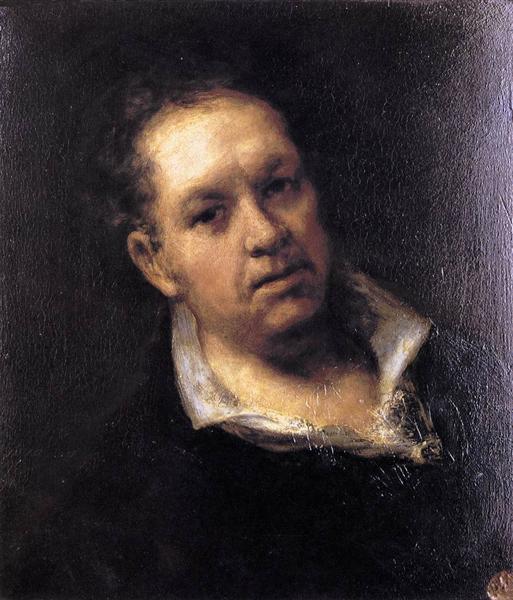Description
In the Self-Portrait of 1815, Francisco Goya presents himself to the viewer in a work that perfectly embodies the complexity of his artistic character and the turbulent reality of his life. This canvas is a testimony not only to his virtuosity as a painter, but also to his deep introspection and his commitment to emotional truth. Goya portrays himself frontally, with a serene but penetrating gaze, inviting the observer to a personal and almost intimate connection with his person.
The composition of the work is remarkable, using a dark background that frames the figure of the artist. This use of contrast emphasizes his image, while the play of light and shadow highlights the features of the face, providing a sense of volume and three-dimensionality. The face is the central axis, expressing both the wear and tear of age and the wisdom accumulated throughout his career. Goya, born in 1746, was already immersed in a phase of his life marked by illness and reflection, marking this self-portrait as a meditation on his own mortality and legacy.
The use of colour in this work is remarkable. Goya employs a palette that oscillates between dark tones and the luminosity contained in her skin, which creates a contrast that highlights both the artist's fragility and strength. The white blouse she is wearing can be interpreted as a symbol of purity or honesty, a characteristic that always accompanied her in her artistic work. The dark background with soft strokes suggests not only the depth of the painter's soul, but also the shadows of a Spanish society in turmoil, at a time when wars and political instability were shaking the country.
Goya presents himself without artifice, which is significant in the context of portraiture of the time, where idealization was common. His frank and almost defiant gaze invites reflection on one's own being, an aspect that resonates with the rise of Romanticism and the precursor elements of Expressionism that would develop at the end of the 19th century. Through this self-portrait, one can also read an implicit criticism of the conventions of academic painting, opening a path towards a new way of understanding art in which the subjectivity of the artist becomes a fundamental element.
When considering Goya's legacy, it is pertinent to put this self-portrait into perspective within his broader oeuvre, which addresses themes of war, madness, and the human condition. His style has influenced countless later artists, marking a transition between Neoclassicism and Romanticism, as well as his evolution into what would become known as modern art. Similar works in his corpus, such as The Second of May 1808 or The Disasters of War, also exhibit his interest in raw truth and the dark aspects of human nature.
In conclusion, the Self-Portrait of 1815 stands as an emblematic piece that captures the essence of Goya not only as an artist, but as a human being. It traverses time, resonating with an intimacy that endures and continues to invite viewers to confront their own realities. The work invites deep contemplation, thus becoming a timeless dialogue between artist and observer.
KUADROS ©, a famous painting on your wall.
Hand-made oil painting reproductions, with the quality of professional artists and the distinctive seal of KUADROS ©.
Painting reproduction service with satisfaction guarantee. If you are not completely satisfied with the replica of your painting, we will refund 100% of your money.

